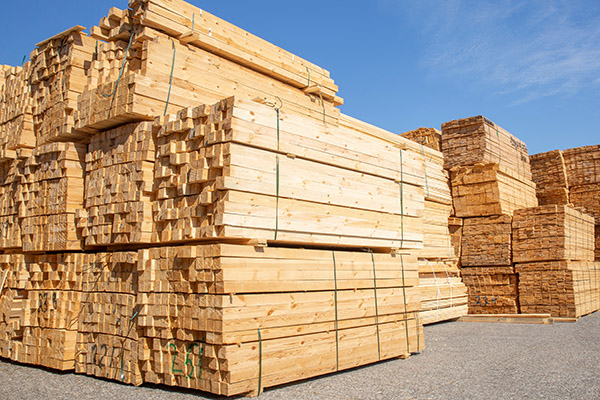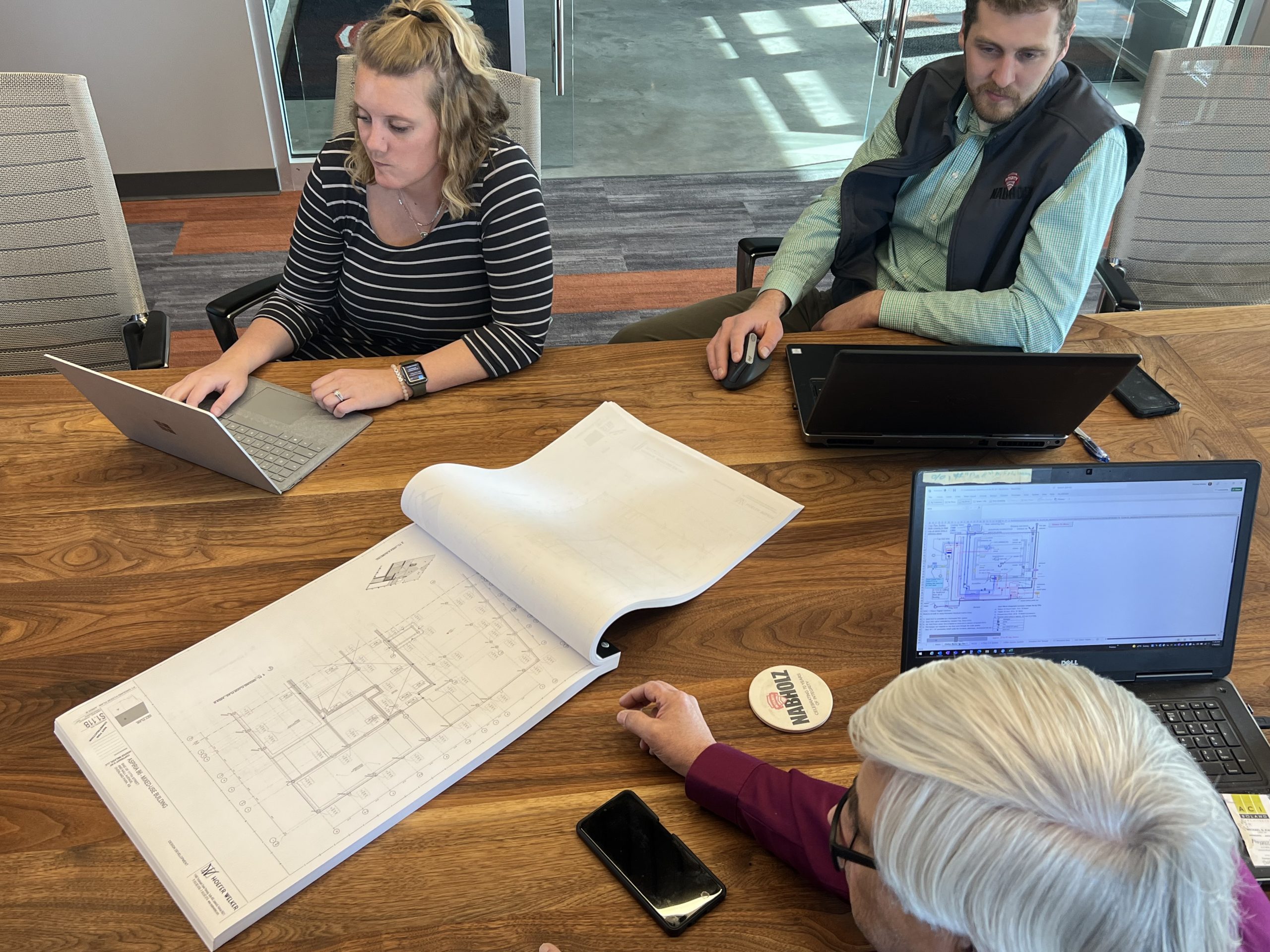THE GLOBAL SUPPLY CHAIN
Around the world, people are feeling the effects of price increases, and the construction industry is no exception. When examining some of the causes for price hikes, one thing becomes clear — our supply chain is delicate. From seemingly “small” delays o politics and pandemics, our supply chain is deeply distressed, as are the consumers dealing with the ever-changing availability and price of materials.
On March 23rd, 2021, a mega container ship became lodged in the Suez Canal and blocked this vital shipping route for six days. Losses began mounting almost immediately. The BBC News reported that every minute the canal was obstructed triggered $6.7 million in losses. Other carriers either had to sit and wait or reroute via the southernmost tip of Africa, adding weeks and additional fuel costs to each shipment. The effects of this “hiccup” were felt for months afterward.
If the Suez Canal incident turned the spotlight on the vulnerability of the global supply chain, the coronavirus pandemic financed the show and sold tickets.
An average spectator might look at a vast shipping port with hundreds of containers and make the incorrect assumption they are an infinite resource. However, when COVID -19 struck, whole countries went on lockdown, transportation passages froze, and production halted. The reduction in workforce, combined with less manufacturing, caused shipping containers to pile up.
Shipping containers play a significant role in stabilizing global transport. Therefore, a balanced number of vessels should operate simultaneously to deliver loaded containers and pick up empty ones. Unfortunately, COVID-related shutdowns upended this equilibrium. Paired with the decrease in manufacturing and shutdowns of its own, the shipping industry collectively reduced the number of boats and voyages. As a result, empty containers remained in ports, crowding loading docks.
However, when the need for goods picked up, the combination of a lack of containers, overloaded ports, and ever-changing COVID regulations meant supply could not meet demand. According to project44.com, shipping timelines doubled — whereas a transit from Beijing to Chicago used to take 33 days, that time doubled to 65 days. Increased demand caused freight rates from China to the US to surge three-fold over 2021. As a result, cargo space on vessels now goes to the highest bidder.
TIMBER AND OTHER INDUSTRIES STRUGGLE

In an article for Quartz, University of Tennessee Professor Andrew Mohammad noted that the forestry sector—landowners, logging companies, and sawmills—lost an estimated $1.1 billion in 2020. However, no single factor is to blame for this loss. Rather, devastating wildfires and hurricanes, the Covid-19 pandemic, and a longstanding trade war with China have all crippled the industry.
In that same article, Mohammad explains the complexity of the US and China’s relationship to forestry products. “The US sells logs and lumber to China; China uses the logs and lumber to produce finished wood products, such as furniture and hardwood flooring; and China exports these finished wood products to the world. Interestingly, the US market is the leading destination for these exports. In 2018, US imports of wooden furniture and other wood products from China exceeded $9 billion, according to the US Census Bureau.”
A solution seems obvious: the US should manufacture finished flooring and furniture at home. However, worker pay varies so much between the US and China that it is more economical to sell wood to China and buy back finished products.
At the onslaught of the pandemic, people were worried about the security of their wages, companies and industries didn’t know if business would be halted. Naturally, the demand for finished products drastically decreased. This hurt exporters and importers alike, with supporting industries — such as trucking — contributing to the imbalance of supply chains.
Timber is just one resource that depends on transport between raw material supplier to manufacturer. The steel industry was also affected. In an article on businessinsurance.com, Matthew Lerner noted that “occurrences as disparate as an upswing in home improvement projects during pandemic lockdowns to a coup in the African nation of Guinea — the world’s second-leading supplier of bauxite, a key input for aluminum — have strained supply chains.”
The pandemic, tariffs and trade wars, natural disasters, and one-off events — for example, the Suez Canal disaster and political coup in Guinea — all played a part in overwhelming the supply system. Now, with much of the world open again, the critical question is how soon it will recover.
RISING CONSTRUCTION COSTS
 As the pandemic progressed, construction and other related industries were quickly deemed “essential,” causing a major increase in demand for materials. Soon the supply chain was racing to meet demands. However, like a football player recovering from a devastating knee energy, it couldn’t immediately handle full-capacity play.
As the pandemic progressed, construction and other related industries were quickly deemed “essential,” causing a major increase in demand for materials. Soon the supply chain was racing to meet demands. However, like a football player recovering from a devastating knee energy, it couldn’t immediately handle full-capacity play.
According to Lerner, the perfect storm of natural disasters , manufacturing and production setbacks, logistical bottlenecks, labor shortages, and political instability” have led to depleted stocks, delays, and sharp price increases. Figures from the Associated General Contractors of America’s 2021 Construction Inflation Alert show that wood was up 101% year-over-year, steel prices have increased 88%, copper is up 61%, and aluminum rose 33%. These conditions change week-to-week, and the burden to manage these shifts has fallen to contractors.
Construction companies have dealt with these factors in different ways. Some are moving supplies to other sites to avoid work delays. Others hoard materials to avoid shortages, procuring materials proactively instead of relying on just-in-time delivery. However, such material storing can raise safety concerns and carry inventory increases costs.
Some economists predicted prices might return to near-normal levels in late 2021, but increases have continued into 2022, though with varying severity. Unable to rely on the market reports as they usually do, estimators are having trouble accurately predicting construction costs and timelines, causing concern for owners.
HOW NABHOLZ IS DEALING WITH SUPPLY CONCERNS
When working through these issues, honest communication with clients about price increases and decreases is one of the best ways to prepare them for the unknown. We can also walk clients through options to minimize surprises. Another huge advantage to communicating with owners and designers at the beginning of projects is we can encourage prioritizing materials with long lead times so the designer can release these packages early.
 Our preconstruction teams are also getting creative with alternative materials. In these cases, it is key to talk through all the pros and cons to allow the client to make an informed decision. We’ve found clients to be understanding, and for those with projects already in process, open to entertaining alternate materials even after the GMP has been established. Optimizing the design to use fewer materials and utilizing lean methods to reduce waste have also helped our owners maximize return on their investment.
Our preconstruction teams are also getting creative with alternative materials. In these cases, it is key to talk through all the pros and cons to allow the client to make an informed decision. We’ve found clients to be understanding, and for those with projects already in process, open to entertaining alternate materials even after the GMP has been established. Optimizing the design to use fewer materials and utilizing lean methods to reduce waste have also helped our owners maximize return on their investment.
Of course, no amount of redesigning can offset double-digit (and even triple) price increases. Even if contractors lock in prices or buy all the material necessary for a project at once, those prices are still high. Furthermore, these practices might mean owners overpay for material if prices drop with such an unpredictable market. With guidance from their contractor, owners can weigh the cost risks of securing material versus possible delays.
Nabholz now includes a “Market Volatility Contingency” figure in addition to traditional line items in our contingency estimates. We’ve also added language in GMP contracts about material escalation. We promise to utilize our relationships and best efforts to minimize cost impacts; however, with such volatile market conditions, the owner might have to pay for sudden increases in material costs. Our open-book accounting guarantees owners will have full access and transparency to documents detailing price changes.
Now, more than ever, owners need to have a seasoned contractor on their side from the beginning of their project. With 70+ years of experience, Nabholz has relationships with designers, suppliers, and subcontractors that allow us to do all we can to keep a project — and its budget —on track.
SOURCES
ENR: 2021 3Q Cost Report: No End in Sight to Year of Supply Chain Chaos and Materials Challenges
Globe St.com: Deciding Who Will Pay for the Steadily Rising Materials Costs
Business Insurance: Supply Chain Problems Plague Construction Firms
Project 44: Economic Impacts of the Suez Canal Blockage
Project 44: Container Shortage – Where Did The Containers Go?

